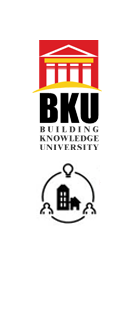Concrete Systems
This lesson covers concrete - an extremely versatile material commonly used both as an exterior finish and as a structural material. Building designers use concrete for the superstructure itself, or they combine it with other materials, such as steel.
Much of concrete's versatility comes from the difference in fabrication methods. Concrete can be poured-in-place, assembled as pre-cast concrete panels, or poured flat at the job site and then tilted up into place. Contractors and manufacturers can combine concrete with many other materials, giving building designers tremendous flexibility in terms of applications and aesthetics. Prices, design properties, and typical uses vary for each of the three systems covered in this lesson.
Learning Objectives
At the conclusion of this lesson, you will be able to:
- Be able to describe typical applications of the three most common types of concrete systems
- Identify where building designers use each of the three systems and be familiar with the relative costs of each assembly
- Be able to describe the seven typical components of concrete systems
- Understand how concrete assemblies address design criteria, including loading requirements, lateral forces, and others
- Recognize common problems associated with concrete systems.
Hover your cursor over icons to see title of link

